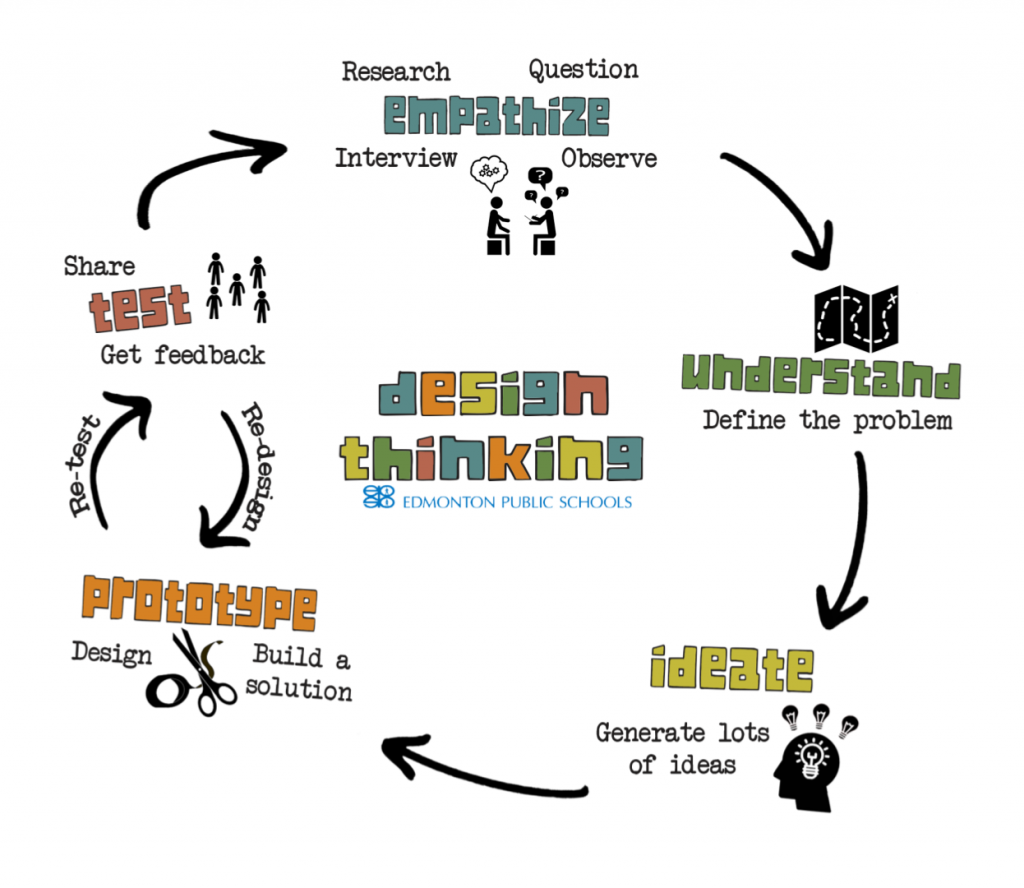Written by Ron Sperling
Design thinking engages students and gets them to use the target language in an authentic way. There are no real qualifications required for designing something, except for patience, creativity, and a growth-mindset. In a design thinking task, students collaborate to develop a project that meets certain success criteria within specific constraints. The aim is to improve something for someone else’s benefit. Guiding questions often begin with “How might we…?” For example, “How might we create a better learning environment for our language class within the constraints of available resources?” For classes with a wide range of student abilities and language proficiency levels, design thinking can be an effective way to scaffold and differentiate instruction. In the second language classroom, it is also a powerful way to engage students with the target language and cultures in a creative, authentic way.
What is Design Thinking?
Challenges spark innovation and drive design thinking. A timely example is the creativity and ingenuity demonstrated by teachers and students in response to the COVID-19 pandemic.
Design thinking allows for flexibility, so students can self-direct their journey by starting at any point and moving freely between the steps, sometimes backwards when necessary. This visual representation of design thinking highlights the stages used in the process:

Image shared with permission from Edmonton Public Schools
Stages of Design Thinking
Empathize
In the Empathize stage, students will research, interview, observe, administer surveys, and use whatever means appropriate to gather information. Empathy is at the core of design thinking, and it lends itself well to the second language classroom. Learning another language and about other cultures usually leads to seeing the world in a different way. It’s not unusual for the second language classroom to be the first opportunity for students to learn about empathy. It’s also a great opportunity for students to discuss different perspectives in the L2. Teachers can help by providing sentence starters so that students can engage in authentic conversations in the target language.
Understand
Asking students to articulate their understanding of the challenge and what they need to design is an important step in the process. Having a clear understanding of the task, success criteria, and constraints will guide students in generating ideas during the Ideate stage. Students combine the information collected in the Empathize stage with other data they observe to create inferences in the next stage.
Ideate
The goal of the Ideate stage is to explore a wide solution space — both a large quantity of ideas and a diversity of ideas. Students generate as many ideas as possible and aim to generate radical design alternatives. Support students by providing sample sentence starters to articulate their ideas, as well as strategies for finding unknown vocabulary in the target language. Emphasize that all ideas are good because we don’t know where they will lead. Ask students to consider the cultures of the target language. How would a young person living in one of these cultures receive their ideas? Ideation is a mode of expanding rather than focusing your thinking. Have students split the design statement into several “How might we…?” questions or chunks and develop guiding thoughts for generating ideas. Encourage them to think creatively, perhaps outside of what they know is possible.
Prototype
Students can now use their vast repository of ideas to build prototypes to test with users. Prototyping is something students do regularly, but we call it drafts or homework. When students develop a prototype for their idea, they are:
- Taking a low-risk chance of explaining their concept
- Testing and proving their ideas
- Innovating as they go
Consider using readily available materials on the first prototypes. Students will learn through trial and error, so using recycled, free, or inexpensive materials during the prototyping stage helps minimize feelings of failure. Emphasizing the constraint of time throughout the process helps students develop time management skills. It also engages them by generating authentic conversations around the use of time outside the classroom setting.
This stage is also an opportunity to engage community experts. There are likely many members of the second language community who can support students with their prototype, and this is another way to demonstrate to your class that the target language is alive outside the classroom. Remember to adhere to your school’s protocols for guest speakers.
Test
Planning time for students to share their prototype for feedback is perhaps the most important stage in design thinking. It is important to foster a growth mindset and encourage students to actively seek constructive criticism so that they can improve their prototype. Focus on communication, with less emphasis on accuracy, and provide scaffolding so that feedback conversations can be conducted entirely in the target language. Conducting these conversations in the target language is a powerful way to engage students with authentic vocabulary and phrases that extend beyond the classroom. Some sample sentence starters you may consider providing to your students in the target language include these:
- I like…
- I wish…
- I wonder…
Conclusion
Design thinking can engage students with a real-life task anchored in authentic language. Individual students may have skill sets that suit different stages of the process, and the resulting interactions are important parts of the design thinking process that can lead to new ideas and authentic use of the target language.
Design thinking asks students to practice empathy by questioning, observing, and conducting research, which can help drive learning about different cultures in the second language classroom. Students will enjoy the creative freedom and flexibility that design thinking affords, and you will be impressed with the ideas they can generate for the betterment of others.
Deepen your understanding of design thinking and the L2 classroom by watching Ron Sperling’s webinar in the CASLT CoLab.




